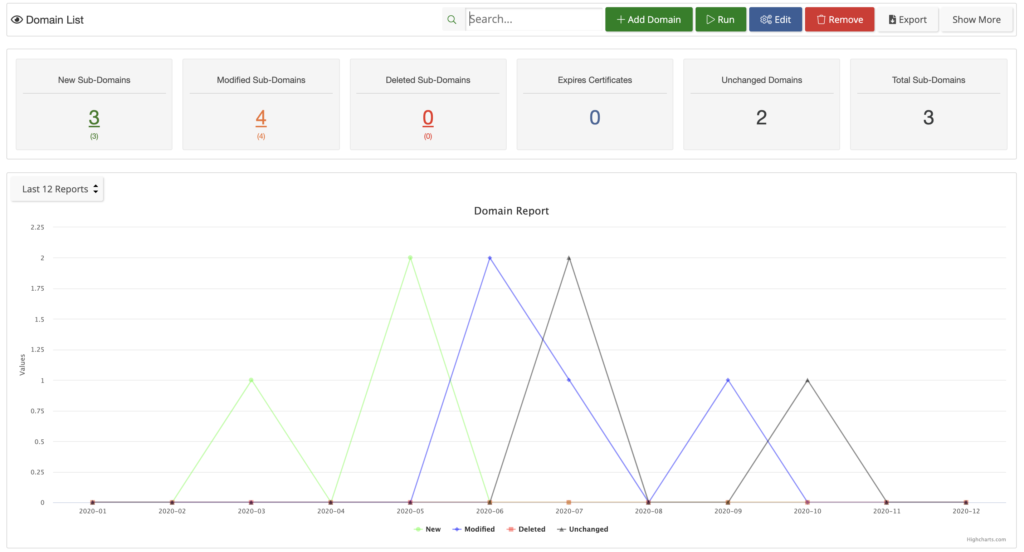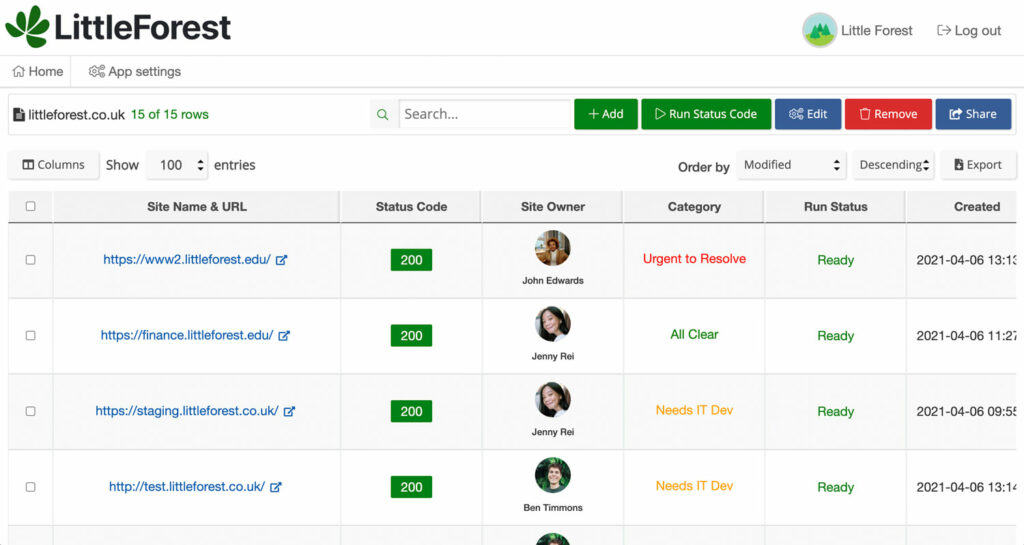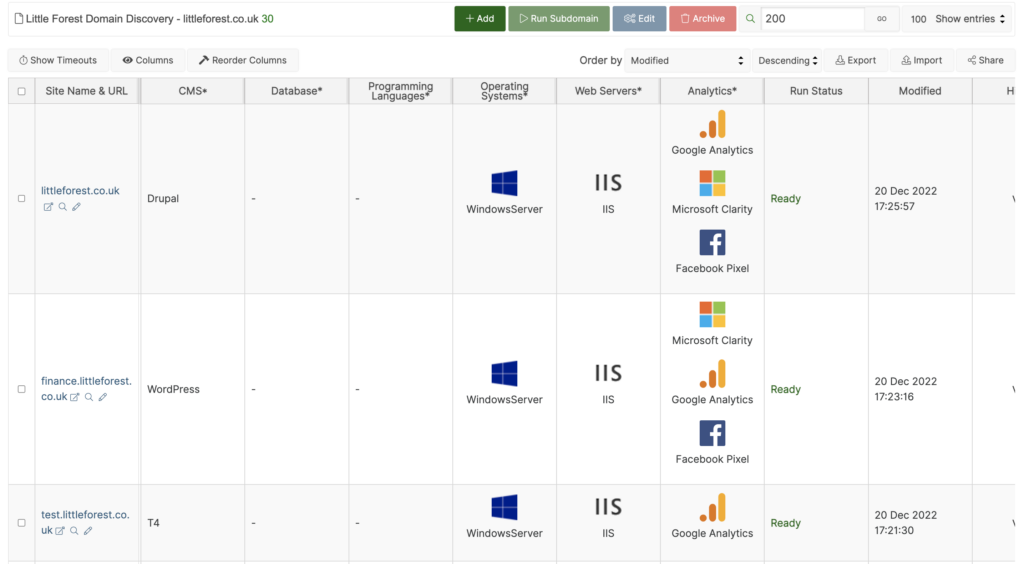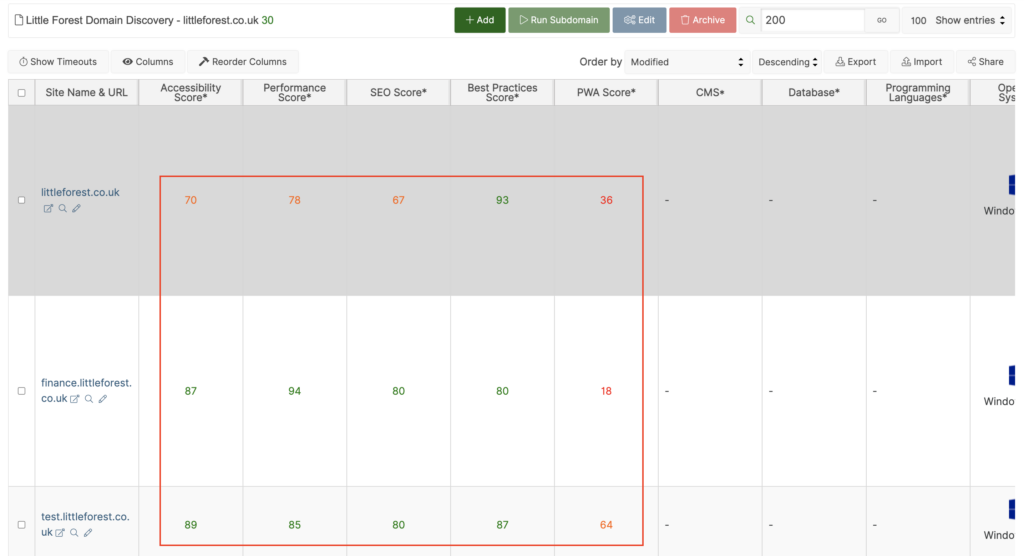Domain discovery offers higher education digital marketers the means to navigate the complexities of your web presence with ease, efficiency, and compliance.
Domain discovery is not just about cataloging domains; it's about optimizing and securing the digital landscape of higher education institutions.
With its comprehensive features, from domain audits to security assessments and customization options, domain discovery empowers digital marketers to deliver a consistent and compliant online experience.
It provides a comprehensive toolkit to enhance user experiences, maintain security, and make informed decisions, ensuring that higher education institutions stand out in the digital landscape.
Many large universities often have a vast and intricate web landscape with several websites, subdomains, and domains...some of which they may not even be aware they have.
These digital assets are essential not just for your brand consistency but also for complying with regulatory guidelines...and ensuring a good user experience.
Without proper management of complex web landscapes that have diverse websites, subdomains, or domains, you run the risk of inconsistent branding, regulatory compliance, and a fractured user experience.
Optimizing SEO and web performance—vital to attracting prospective students—can also be an issue, as can security risks from unidentified domains, subdomains, or even technology tools like content management systems (CMS), hosting platforms, and analytics tools.
In this guest blog post by our partners at Little Forest, experts in accessibility for higher education, we explore how domain discovery can solve many of these issues and how you can use it to better manage your online presence.
Domain discovery: a solution to fractured web landscapes
Domain discovery is a crucial tool and solution to centralize, catalog, and assess all your university or college web assets.
Domain discovery is a process that involves identifying, cataloging, and gaining insights into the web domains associated with your university or college with a comprehensive audit, and then centralizing everything, assigning ownership, tracking security and technology aspects, and better managing your online presence.
In a nutshell, it's a practical approach that empowers universities and colleges to regain control over your web estates, so you can deliver a high-quality experience while maintaining compliance and security standards.
Conducting domain discovery for your higher education websites has valuable benefits:
- Getting a handle on your web assets
- Ensuring you can ensure more consistent branding
- Maintaining compliance with regulations
- Securing your online presence
- Improving accessibility
- Better allocating resources
- Providing a seamless online experience for students and other website users
Horizontal and vertical domain audits
One of the foundational steps in domain discovery is conducting a comprehensive audit of all your domains.
Typically, this process begins with a horizontal domain audit, which identifies all unique domains registered under your organization's name, such as "yourwebsite.edu" and "yourwebsite.com."
Following the horizontal audit, a deeper vertical audit is conducted into each domain to uncover all associated subdomains like "test.yourwebsite.edu."
This thorough examination relies on various sources to ensure no domain goes unnoticed, including:
- search engines
- DNS records
- SSL certificate data
You can also effortlessly import pre-existing domains and data from internal spreadsheets.

Domain discovery is the key to centralizing web assets, ensuring brand consistency, and enhancing user experiences
Centralized domain registry
Centralization is crucial for maintaining visibility and control over your web estate.
Vendors like Little Forest, experts in accessibility and domain discovery, have domain registries that provide a comprehensive list of your domains while allowing you to organize them by assigning site owners, categorizing them by CMS or hosting platform, and marking sites for updates or decommissioning.
This structured approach ensures that every domain is accounted for and is aligned with your higher education institution’s goals.
Ownership assignment
Assigning site owners to each domain plays a pivotal role in accountability and compliance, especially in the context of legislation like WCAG accessibility.
Site owners oversee implementation, ensuring that all websites, not just the main one, meet compliance standards.
This approach guarantees that no website slips through the cracks and that responsible individuals actively monitor and maintain them.

An example screenshot from Little Forest’s Platform
Email search and SSL certificates
Domain discovery tools can help you define site owners by scanning landing pages for email addresses. These save valuable time and effort that you’d otherwise spend manually searching and inputting emails into your registry.
These domain discovery platforms also ensure you don't miss an SSL certificate renewal deadline. They provide automated reporting with comprehensive certificate data, including issuer, protocol, validity dates, and security settings, ensuring the security of your web estate.
Enhanced security and technology insights
The domain registry isn't just about cataloging domains; it also provides insights into security and technology.
These days, security is of the utmost importance, and domain discovery process can identify security headers and vulnerabilities, helping your university or college mitigate potential risks.
Each website is scanned for key technologies, including the CMS, operating systems, and analytics tools, providing a clear picture of your web infrastructure.

Performing a domain discovery allows you to identify
a wide variety of technologies used on your websites
Google Lighthouse
Some platforms seamlessly integrate Google Lighthouse, offering an overview of each domain's landing page quality.
Google Lighthouse is an open-source tool that can check your website's speed, how easy it is for people to use, whether it follows best practices, and if it's search engine friendly.
After the check, it gives you a report with scores and suggestions on how to improve your site.
This helps you assess performance, accessibility, SEO, best practices, and more, allowing you to quickly identify non-compliant sites and prioritize resource allocation.

Domain discovery will also surface accessibility, SEO,
and other scores that can help you improve your website presence
Code Search and customization
A domain discovery platform may also include a Code Search feature to help you search landing pages for specific keywords, phrases, or components, such as HTML, CSS, and JavaScript.
This flexibility ensures that you can monitor and enforce specific policies or standards across your web estate.
Code search typically also allows you to customize your views and columns even more, so you can tailor your domain registry to your own institution’s unique needs, including custom titles, input values, color coding, and dropdowns.
Domain discovery alerting and tracking
With alerting and tracking, domain discovery platforms also let you stay informed about any new domains registered under your organization and monitor the performance of existing sites.
You also receive alerts for non-responsive sites and track updates over time, and the platform maintains a version history for reference.
New AI enhancements
AI-powered features are making their way into domain discovery, which marks a significant milestone in web governance for administrators.
In our case, AI enhancements to our platform empower you to enhance your reports with customizable columns that use ChatGPT to provide insights across your entire website estate.
This encompasses a wide range of tasks, from gauging reading age and generating content summaries to extracting phone numbers, evaluating brand consistency, and identifying potentially objectionable content.
The potential applications of this technology are boundless.
AI-driven web registry not only ensures brand compliance but also expedites the identification of crucial focus areas.
Embracing AI promises to revolutionize web estate management, and we eagerly anticipate the innovative ways in which teams will harness this remarkable advancement for substantial benefits.
Prepare for a transformative and powerful experience!
About Little Forest

Little Forest's Domain Discovery is a powerful tool for higher education institutions looking to take control of their web estate. Its comprehensive features, from domain audits to security assessments and customization options, empower organizations to deliver a consistent and compliant online experience. Not sure where to start? Take the first steps with a free report from Little Forest.
Have you performed domain discovery at your institution? How did you benefit?
Let us know in the comments below or on our social media channels.

:format()//media/domain-discovery-for-higher-education---RQ.png)